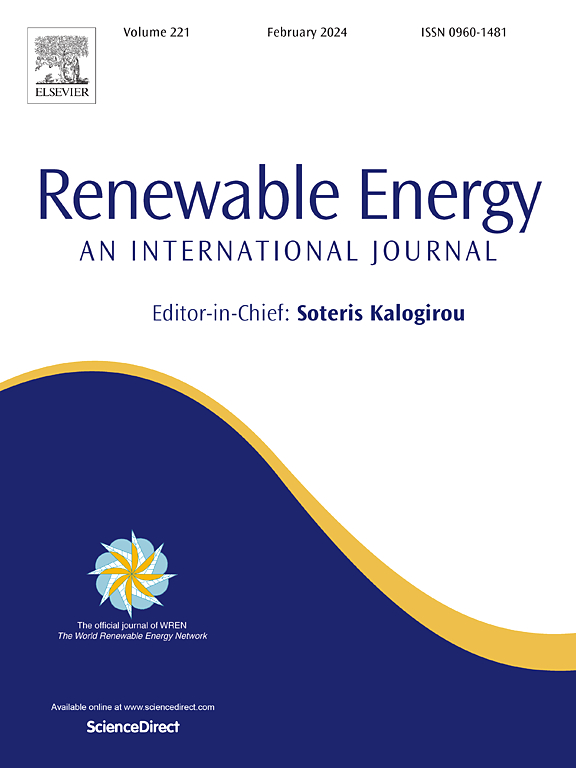A novel structure adaptive new information priority grey Bernoulli model and its application in China's renewable energy production
IF 9.1
1区 工程技术
Q1 ENERGY & FUELS
引用次数: 0
Abstract
At present, the global energy structure is undergoing major changes. China is in the transition period of energy structure. Accurately anticipating future energy trends is critical for China's energy structure and modernization. Considering the uncertainty and sparsity characteristics of China's energy system sequence, this study examines China's renewable energy scenario using the grey model with limited sample and uncertain system modelling features. Renewable energy is affected by a variety of uncertain factors, exhibiting a range of complicated traits including nonlinearity, periodicity and random volatility. The traditional grey model has been difficult to appropriately predict its future evolution. This paper focuses on the adaptability of the model, optimizes and improves the accumulation operator and model structure, and establishes a fractional-order structural self-adaptation grey Bernoulli model based on new information priority. Firstly, based on the new information priority accumulation operator, it is extended to the fractional order. In terms of model structure, combined with NGBM(1,1) model, SADGM(1,1) model and FPGM(1,1) model, periodic fluctuation term and nonlinear power term are included to improve the model's capacity to capture nonlinear, fluctuating and periodic features, and enhance the adaptability and flexibility of the model. The backward difference technique yields the model's parameter estimation and temporal response sequence. Based on the results of the algorithm comparison experiment, the Improved Grey Wolf Optimization Algorithm is chosen to optimize the structural parameters of the model in an effort to enhance its performance. The performance comparison experiment of the model was designed, and three cases of China's hydropower generation, China's renewable energy power generation installed capacity and China's solar energy quarterly power generation were selected to compare the performance with a variety of grey prediction models. Monte-Carlo simulation and probability density analysis were utilized to confirm the stability and accuracy of the proposed model. The results show that the proposed FSANGBM(1,1) model can handle data series of renewable energy with nonlinear, volatile, and periodic features with high prediction ability. Finally, the model is applied to forecast three cases' future development trends.
一种新型结构自适应新信息优先级灰色伯努利模型及其在中国可再生能源生产中的应用
当前,全球能源结构正在发生重大变化。中国正处于能源结构的转型期。准确预测未来能源趋势对中国的能源结构和现代化至关重要。考虑到中国能源系统序列的不确定性和稀疏性特征,本研究采用有限样本和不确定系统建模特征的灰色模型对中国可再生能源情景进行了研究。可再生能源受多种不确定因素的影响,表现出非线性、周期性和随机波动等一系列复杂特征。传统的灰色模型已经难以恰当地预测其未来的演变。本文着眼于模型的适应性,对积累算子和模型结构进行了优化和改进,建立了基于新信息优先级的分数阶结构自适应灰色伯努利模型。首先,基于新的信息优先级积累算子,将其扩展到分数阶;在模型结构方面,结合NGBM(1,1)模型、SADGM(1,1)模型和FPGM(1,1)模型,加入周期波动项和非线性功率项,提高了模型捕捉非线性、波动和周期特征的能力,增强了模型的适应性和灵活性。后向差分技术得到模型的参数估计和时间响应序列。在算法对比实验的基础上,选择改进灰狼优化算法对模型的结构参数进行优化,以提高模型的性能。设计模型性能对比实验,选取中国水力发电、中国可再生能源发电装机容量和中国太阳能季度发电量三个案例,与各种灰色预测模型进行性能对比。通过蒙特卡罗仿真和概率密度分析验证了所提模型的稳定性和准确性。结果表明,所提出的FSANGBM(1,1)模型能够处理具有非线性、挥发性和周期性特征的可再生能源数据序列,具有较高的预测能力。最后,运用该模型对三个案例的未来发展趋势进行了预测。
本文章由计算机程序翻译,如有差异,请以英文原文为准。
求助全文
约1分钟内获得全文
求助全文
来源期刊

Renewable Energy
工程技术-能源与燃料
CiteScore
18.40
自引率
9.20%
发文量
1955
审稿时长
6.6 months
期刊介绍:
Renewable Energy journal is dedicated to advancing knowledge and disseminating insights on various topics and technologies within renewable energy systems and components. Our mission is to support researchers, engineers, economists, manufacturers, NGOs, associations, and societies in staying updated on new developments in their respective fields and applying alternative energy solutions to current practices.
As an international, multidisciplinary journal in renewable energy engineering and research, we strive to be a premier peer-reviewed platform and a trusted source of original research and reviews in the field of renewable energy. Join us in our endeavor to drive innovation and progress in sustainable energy solutions.
 求助内容:
求助内容: 应助结果提醒方式:
应助结果提醒方式:


